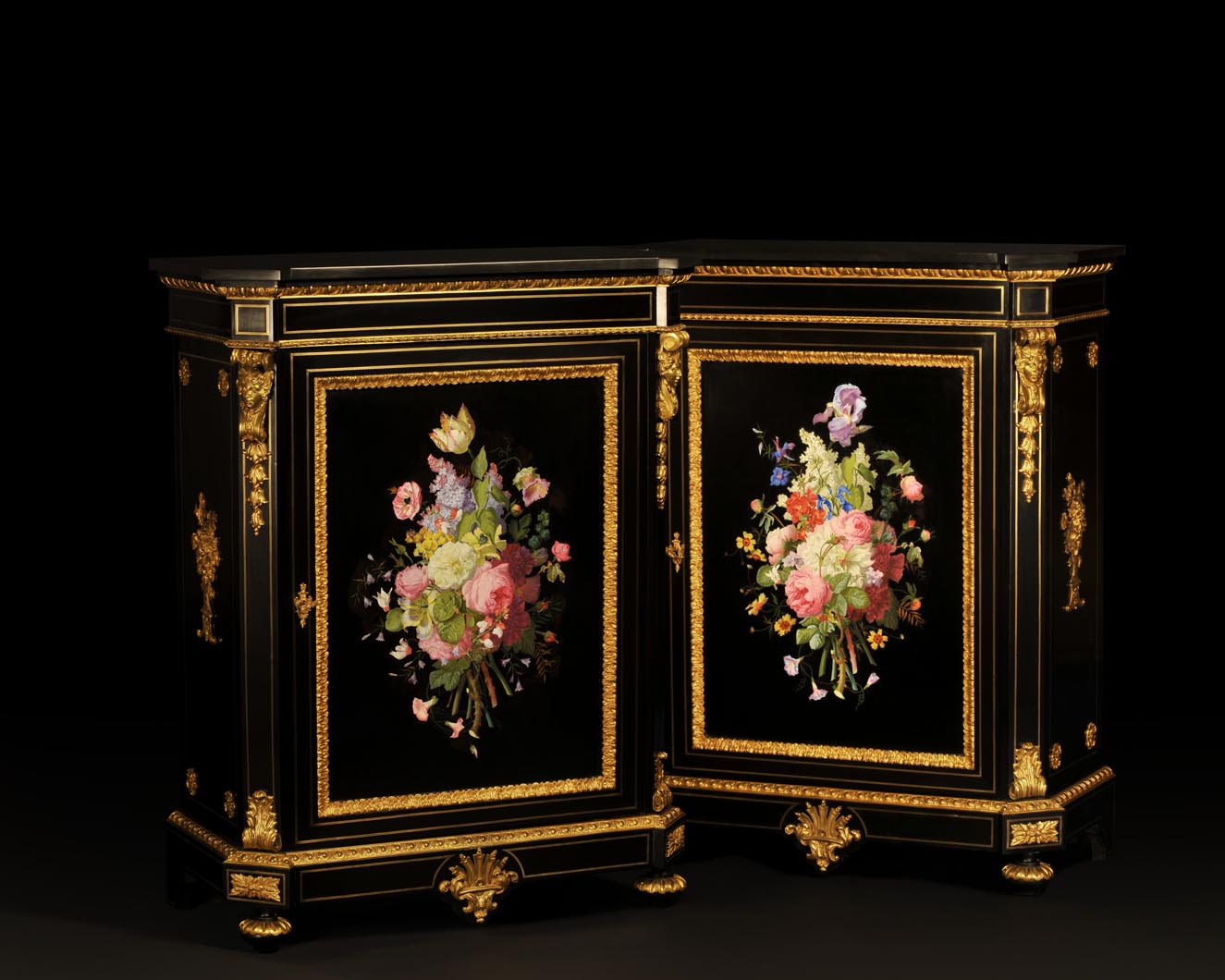
Pair of side cabinets adorned with flower bouquets
1854
Richly decorated in porcelain marquetry and gilt bronze, this pair of side cabinets, made by Julien-Nicolas Rivart , demonstrates the high level of perfection attained by its creator, and may be considered as a master piece of his production.
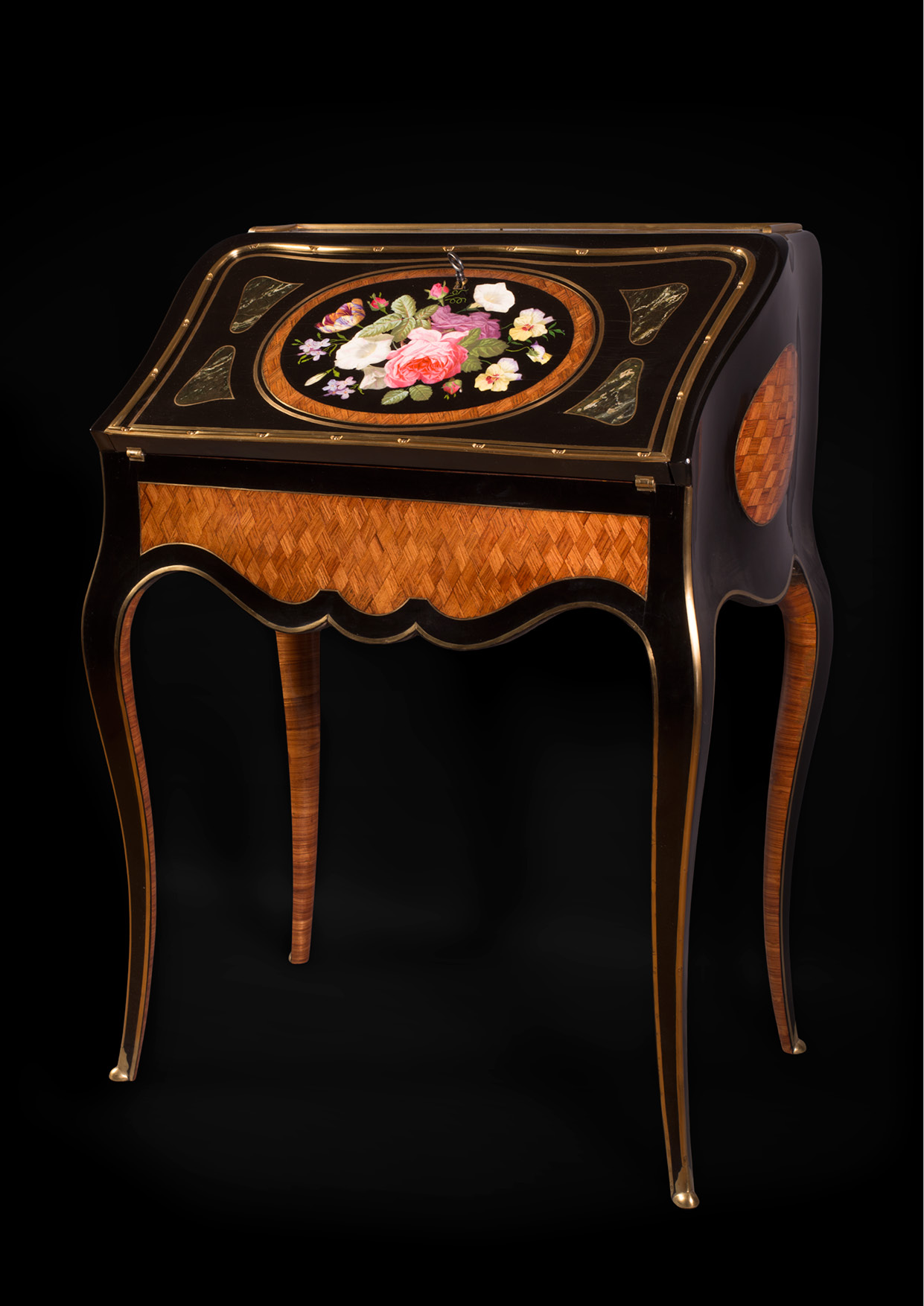
Curved writing desk
Entre 1850 et 1867
This charming writing desk is designed in curves : the rounded feet follows a movement that also curves the sides of the chest. On this one, the rosewood has been plaited in a nice work of marquetry in lozenges.
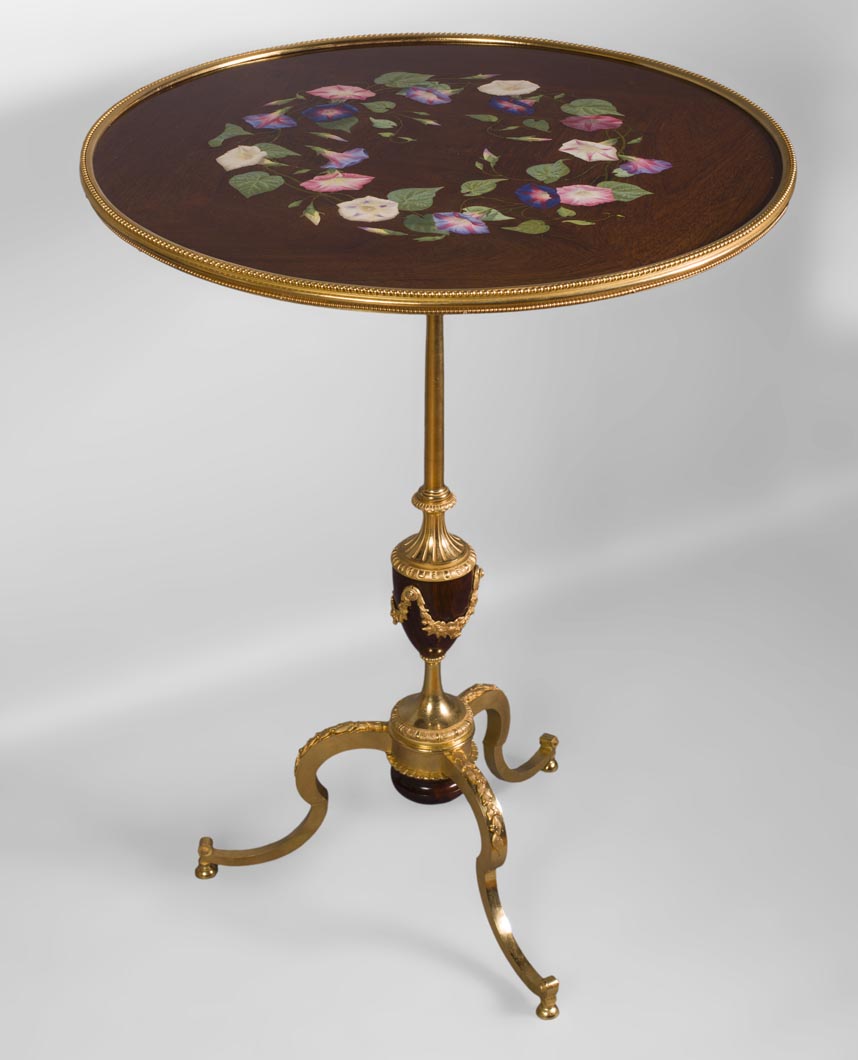
Graceful tip-up pedestal table
Between 1850 and 1867
This elegant Louis XVI style pedestal table was realized by Tahan , “prince of small cabinetmaking”, as a journalist from the Palais de Cristal enjoyed to call him at the World’s Fair of 1851 .
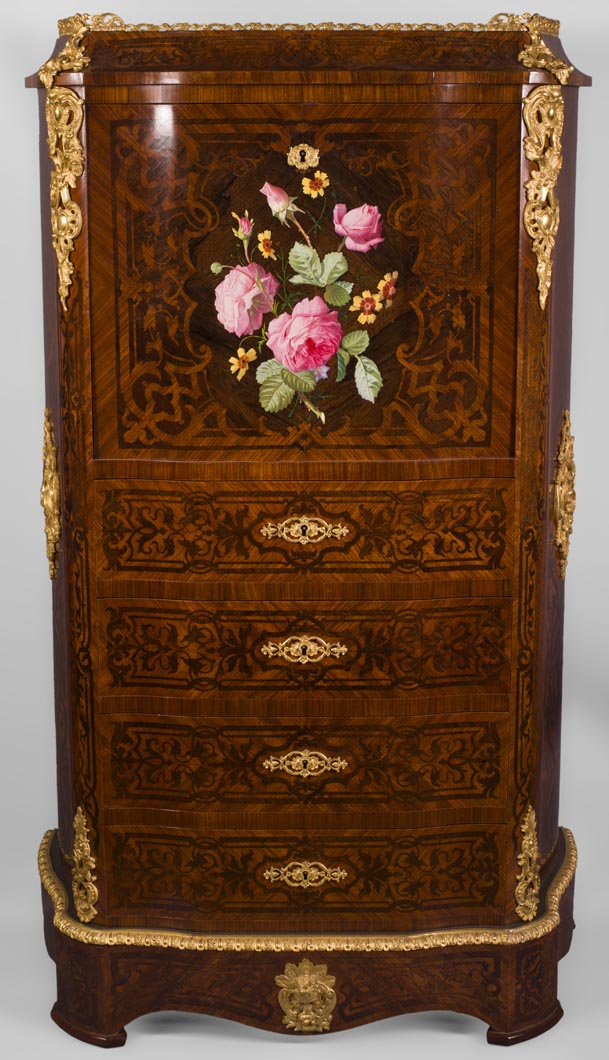
Chiffonnier secretary desk
Between 1850 and 1867
This chiffonier secretary desk is lavishly adorned of gilt bronze, wood marquetry as well as flowers in porcelain inlays by Julien-Nicolas Rivart.
We have here a fine example of these rare decorations with a bouquet of roses and yellow daisies, on a rosewood background. It is framed by the wood marquetry covering the entire piece, a more classical design but of exceptional quality.
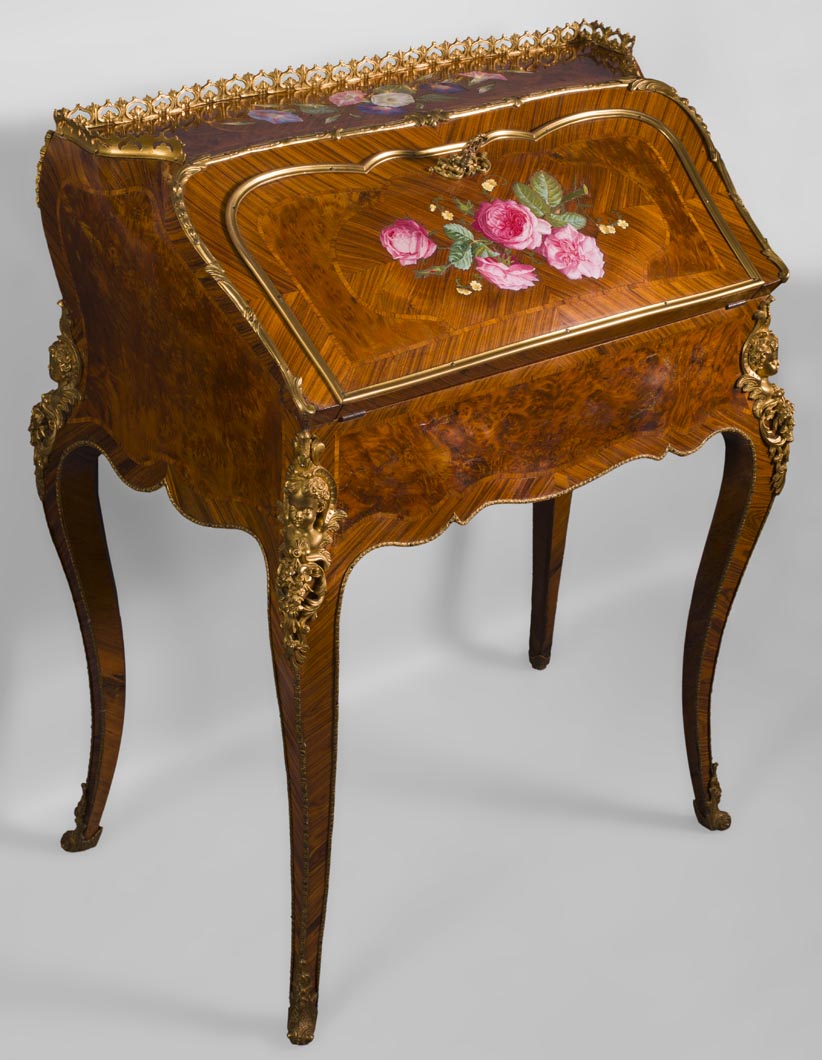
Gorgeous writing desk
Between 1850 and 1867
A rare example of Rivart ‘s collaboration with the prestigious Alphonse Giroux et Cie manufactory, this piece of furniture stands out for its sophistication. The hues of brown obtained by various woods give this precious work a great luminosity.

Leather sheathed jewelry box
Between 1850 and 1867
Since Rivart patented his invention in 1849, he foresaw the possibility of inlaying not only in wood, but in several other types of materials as well, including cardboard, velvet and leather.
Nevertheless, such beautiful examples are scarce, and his box is of a high historical interest.
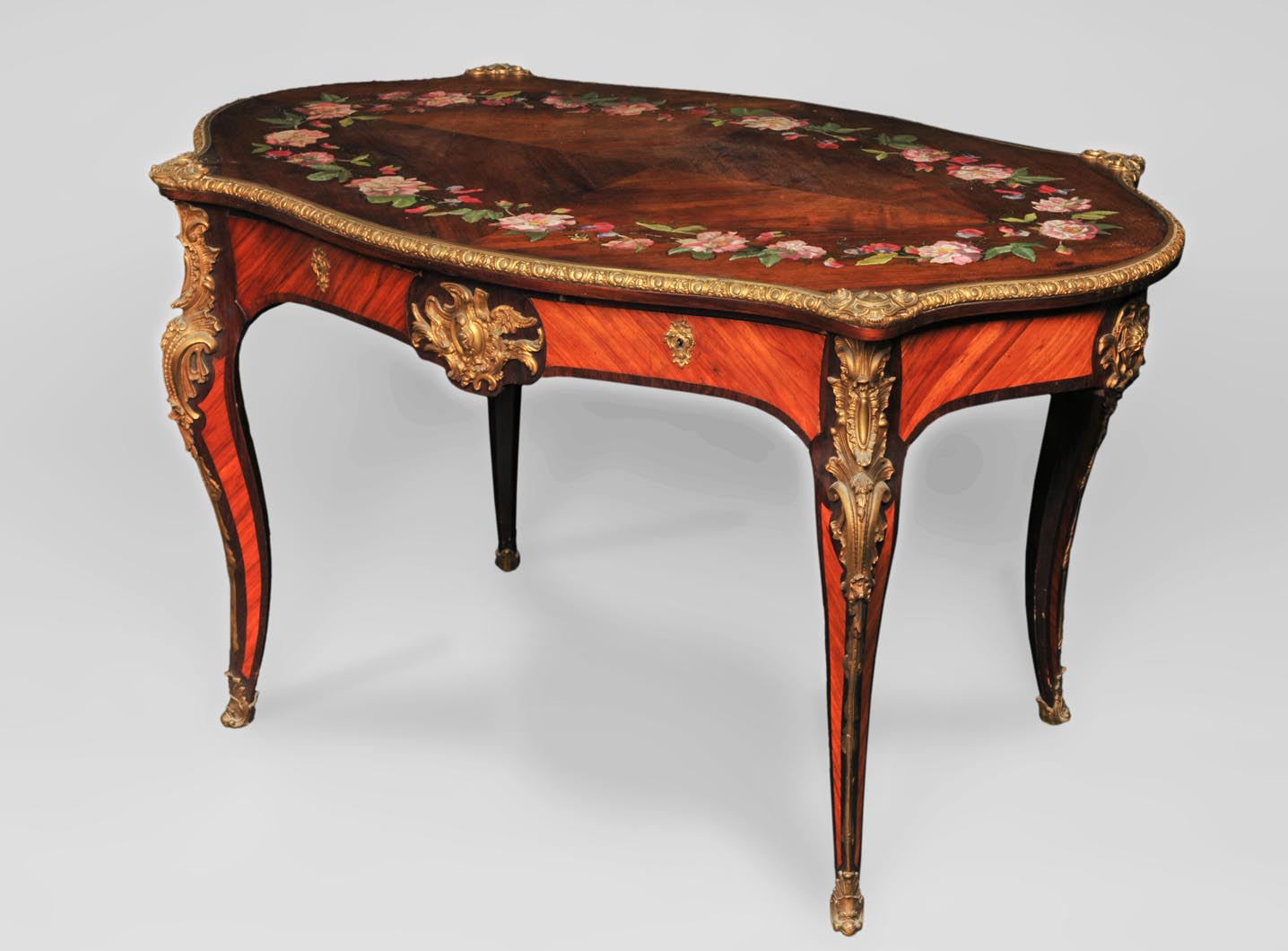
Louis XV style rosewood table
Between 1850 and 1867
Characteristical of Julien-Nicolas Rivart’s production, this Louis XV style table is adorned with inlays of porcelain flowers on the shelf, and gild bronzes in the rococo style on the belt and on the curved feet.
The base is also presenting a refined marquetry decoration, with differen shades of wooden veneer.
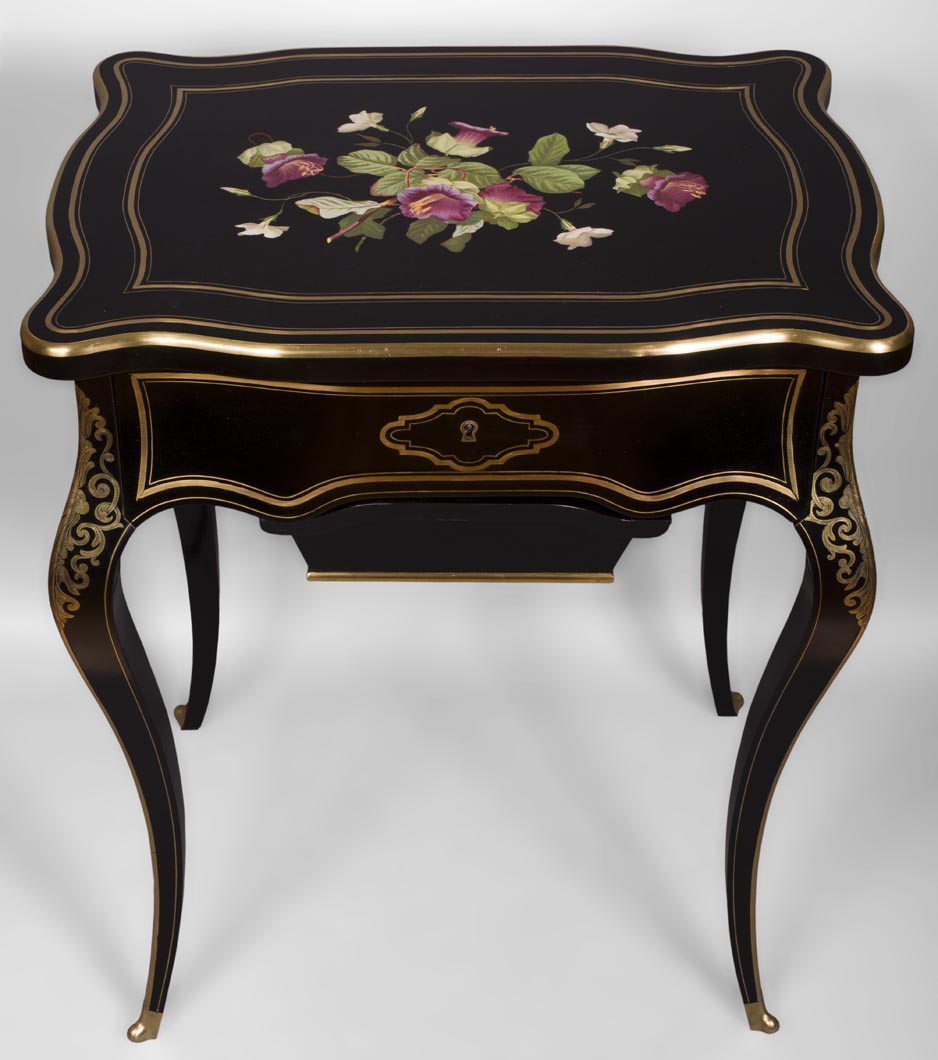
Sewing table in blackened pear wood
Between 1850 and 1867
This elegant sewing table is decorated of flowers in porcelain inlays by Julien-Nicolas Rivart.
The sobriety of this black piece of furniture is only broken by the gilt brass arabesques adorning the feet, and briging some luwury to the composition.
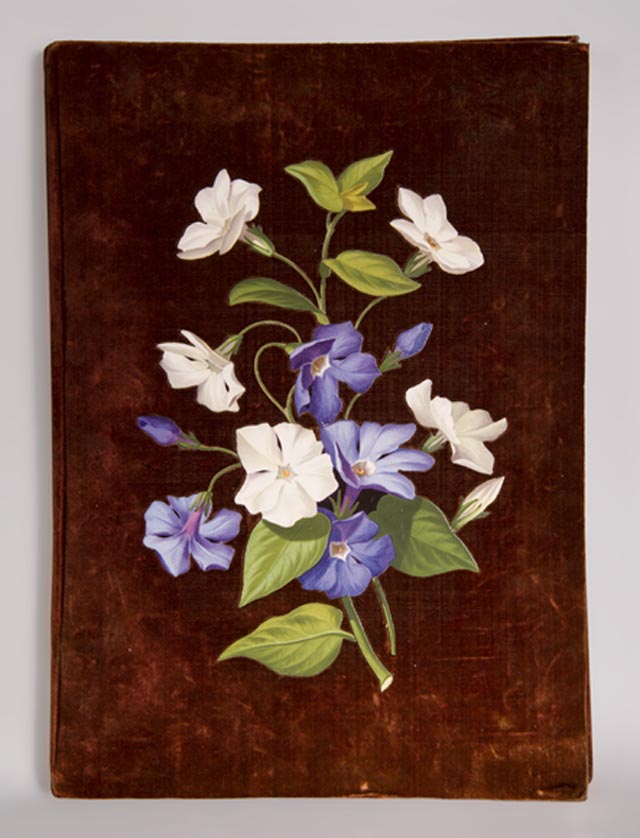
Brown velvet folder
Between 1850 and 1867
Covered in velvet, this folder has two compartments lined with moire fabrics and a matching file. It is decorated with a painted porcelain inlay by Julien-Nicolas Rivart, depicting twigs of campanulas.
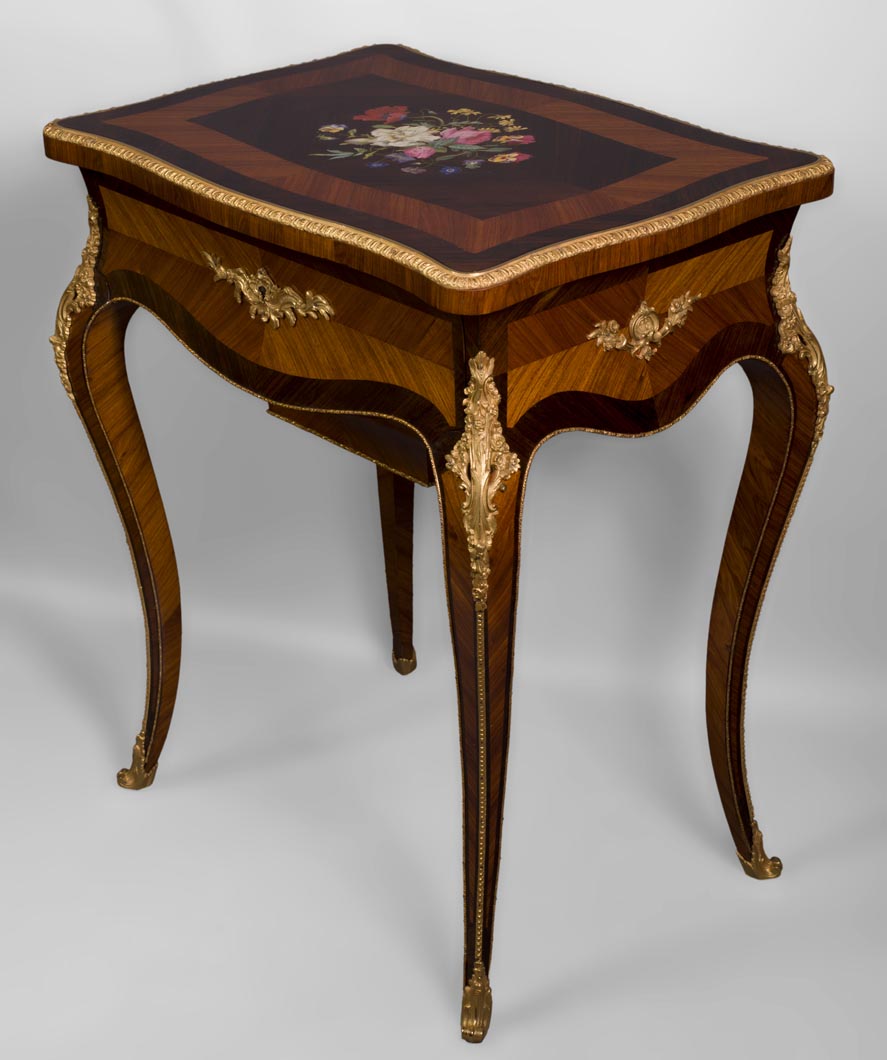
Sewing table with flower bouquet
Between 1850 and 1867
This elegant sewing table was realized by Tahan, “prince of small cabinetmaking”, as a journalist from the Palais de Cristal enjoyed to call him, when he presented a very similar table at the World’s Fair of 1851 in London. Made out of marqueted wood, the decoration of porcelain inlay is a technic patented by Julien- Nicolas Rivart in 1849. The table we present here is thus a rare witness of Tahan’s favorable disposition towards the “Rivart process”.
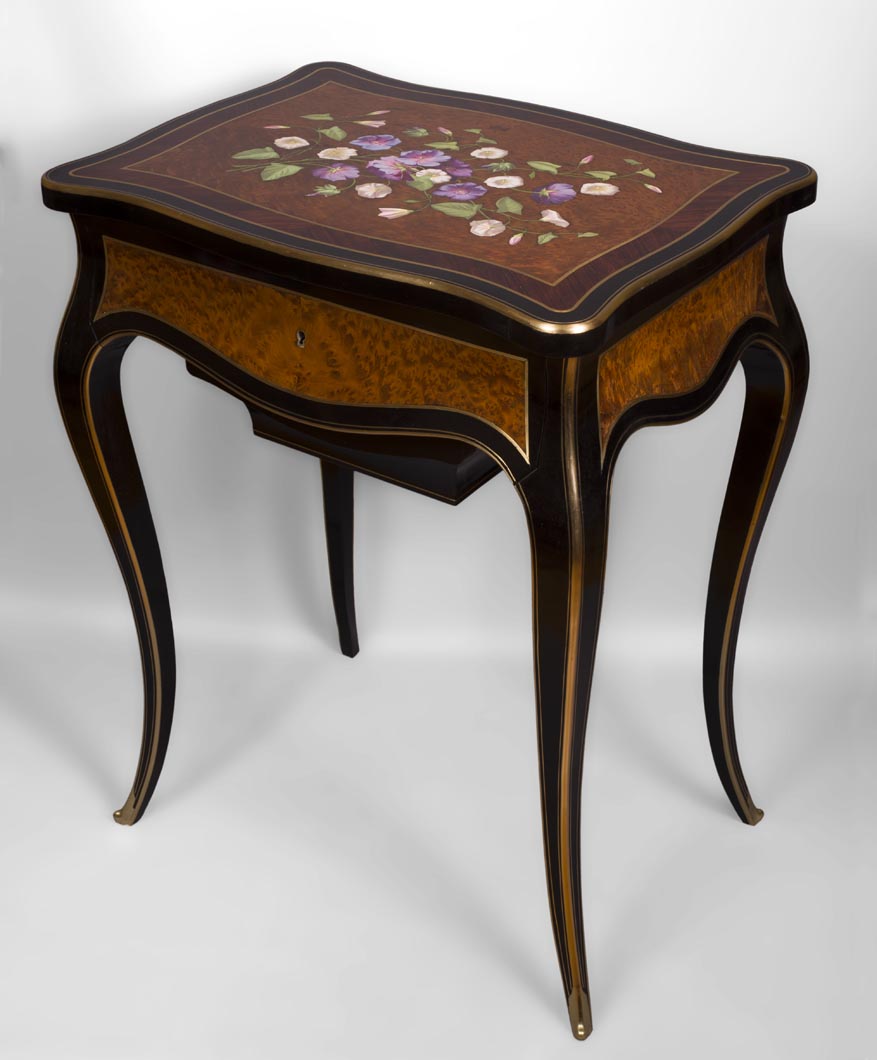
Sewing table decorated with purple and white campanulas
Between 1850 and 1867
This elegant sewing table is decorated of flowers in porcelain inlays by Julien-Nicolas Rivart. This floral decooration detaches itself from a ambonia burl veneer, a precious wood, considered one of the most beautiful, characterised by its rich and capricious veins of a design, either reddish, pinky white or yellowish, in a multitude of thin knots which are blending in every possible way.
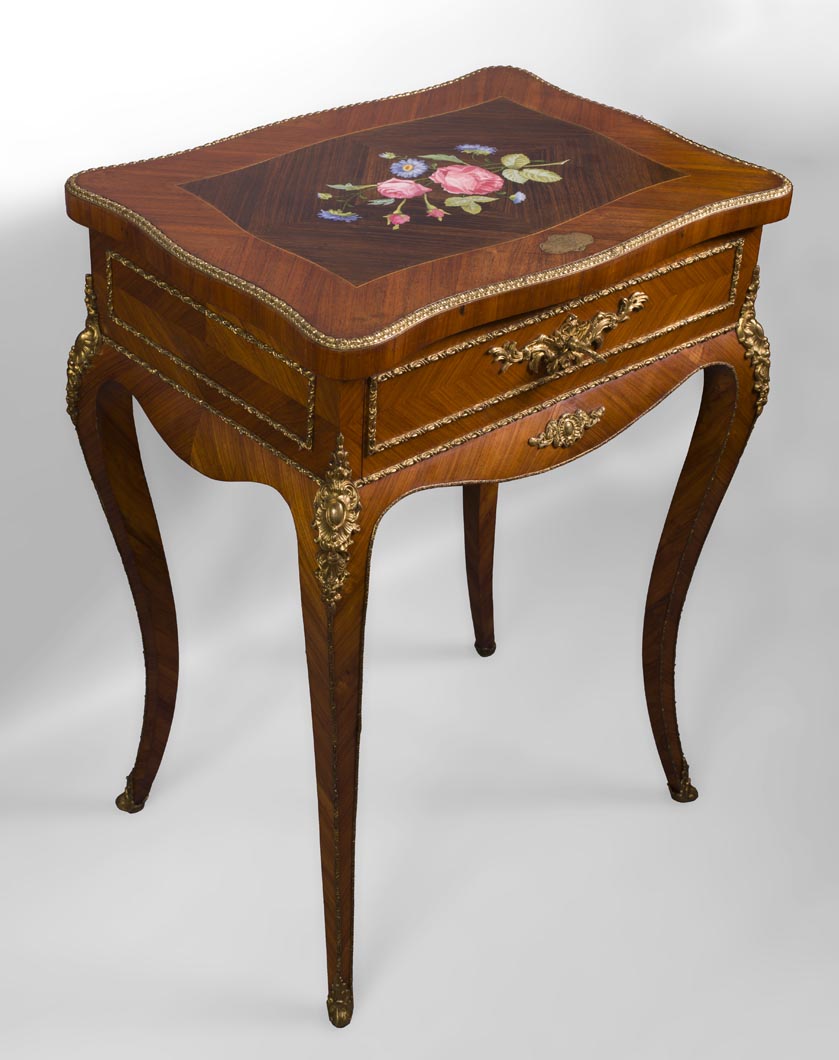
Elegant emblazoned sewing table
Between 1850 and 1860
This graceful sewing table supports a rare porcelain marquetry by Julien-Nicolas Rivart. The blazons side by side, surmounted by a ducal crown and supported by a unicorn and a griffin, demonstrate an aristocratic commission.
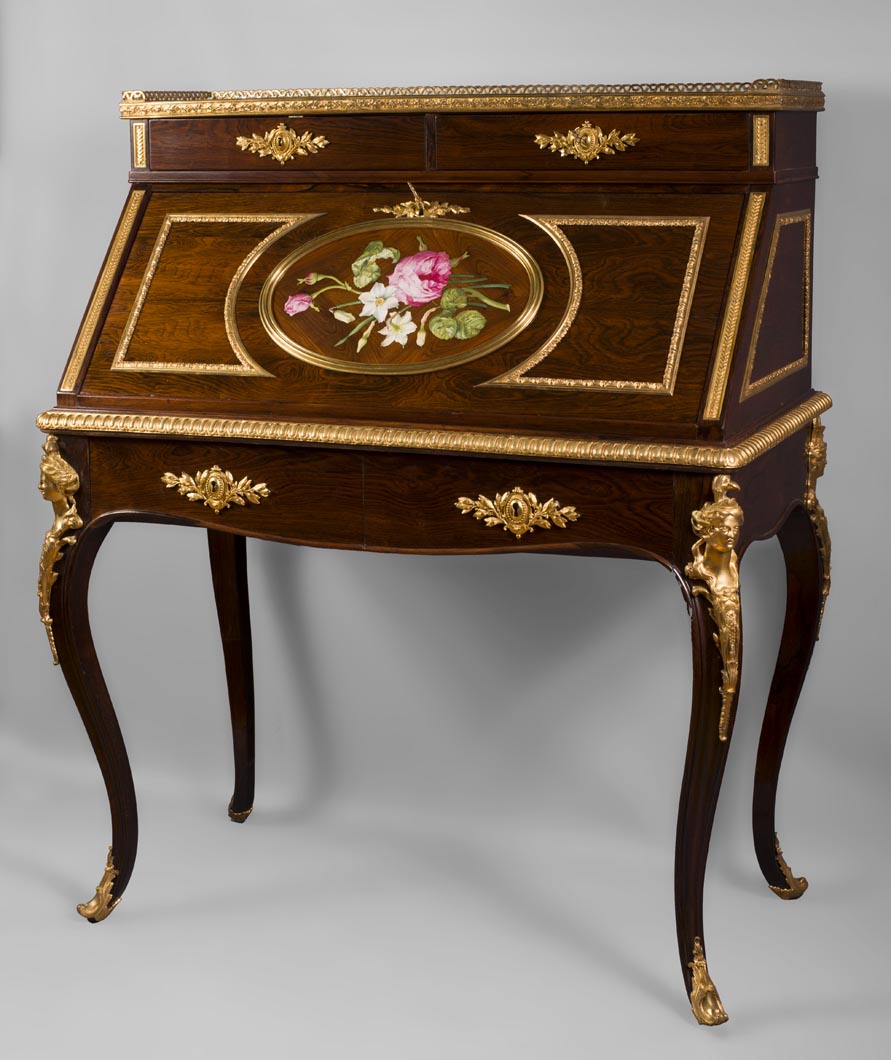
Writing desk of roses and campanulas
Between 1850 and 1867
This elegant writing desk is built in a beautiful dark and warm wood, enhanced by gilt bronze ornaments and flower porcelain.

Purple velvet folder
Between 1850 and 1867
This velvet-covered folder is lined with moire fabrics on the inside. It has two compartments on each side and a matching file.
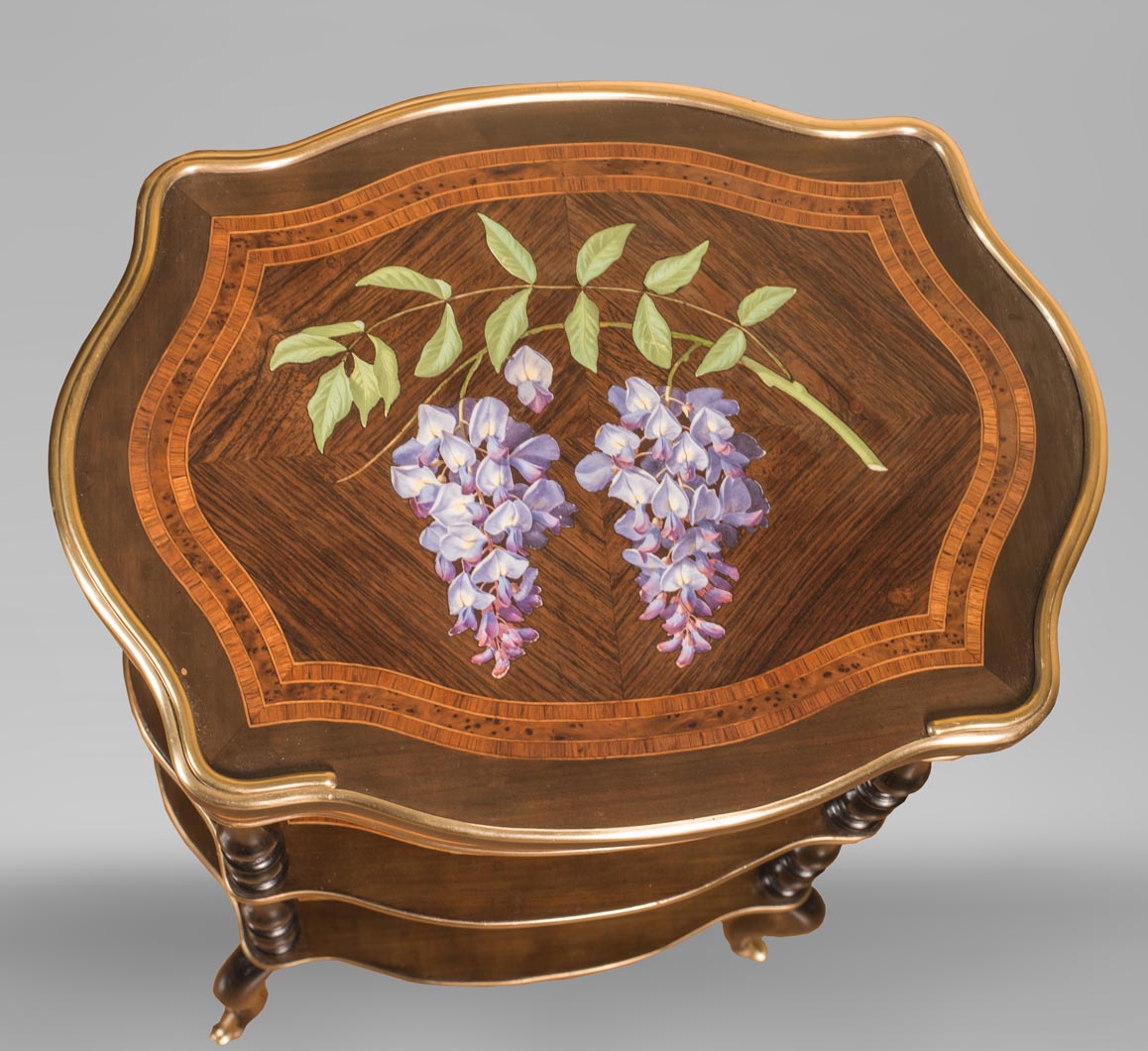
Small bedside table decorated with wisteria
Between 1850-1867
This elegant bedside table is adorned of flowers inlays, which great naturalism illustrates the technical mastery of Julien-Nicolas Rivart, inventor of porcelain marquetry, for which he registered a patent in 1849.
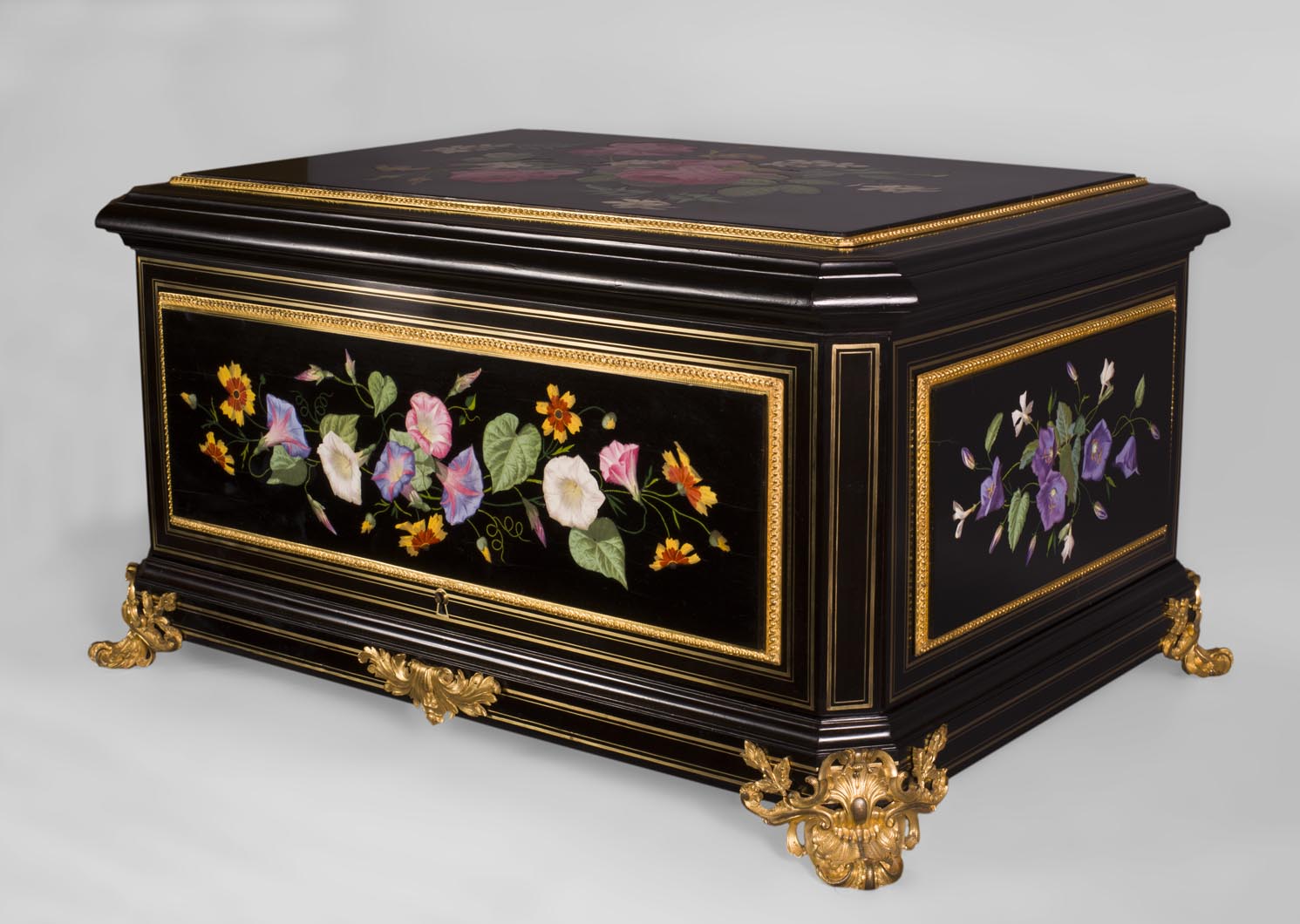
Exceptional jewel case
Between 1860 and 1867
Coming from Elsa Schiaparelli’s collection this large jewel case, which sophisticated decoration of porcelain inlay contrasts with blackened wood, bears the signature of Julien-Nicolas Rivart.
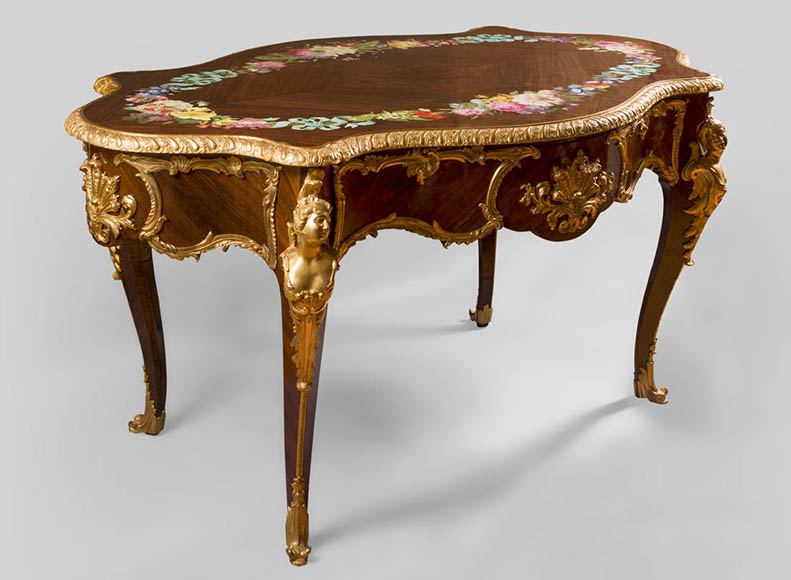
Louis XV style bureau
1853-1856
This flat bureau of an exceptional execution, in the Louis XV style, is the result of a collaboration between the woodmaker Tahan, the audacious Julien-Nicolas Rivart, assisted by the painter of flowers Pierre-Joseph Guérou, of the Manufacture de Sèvres.
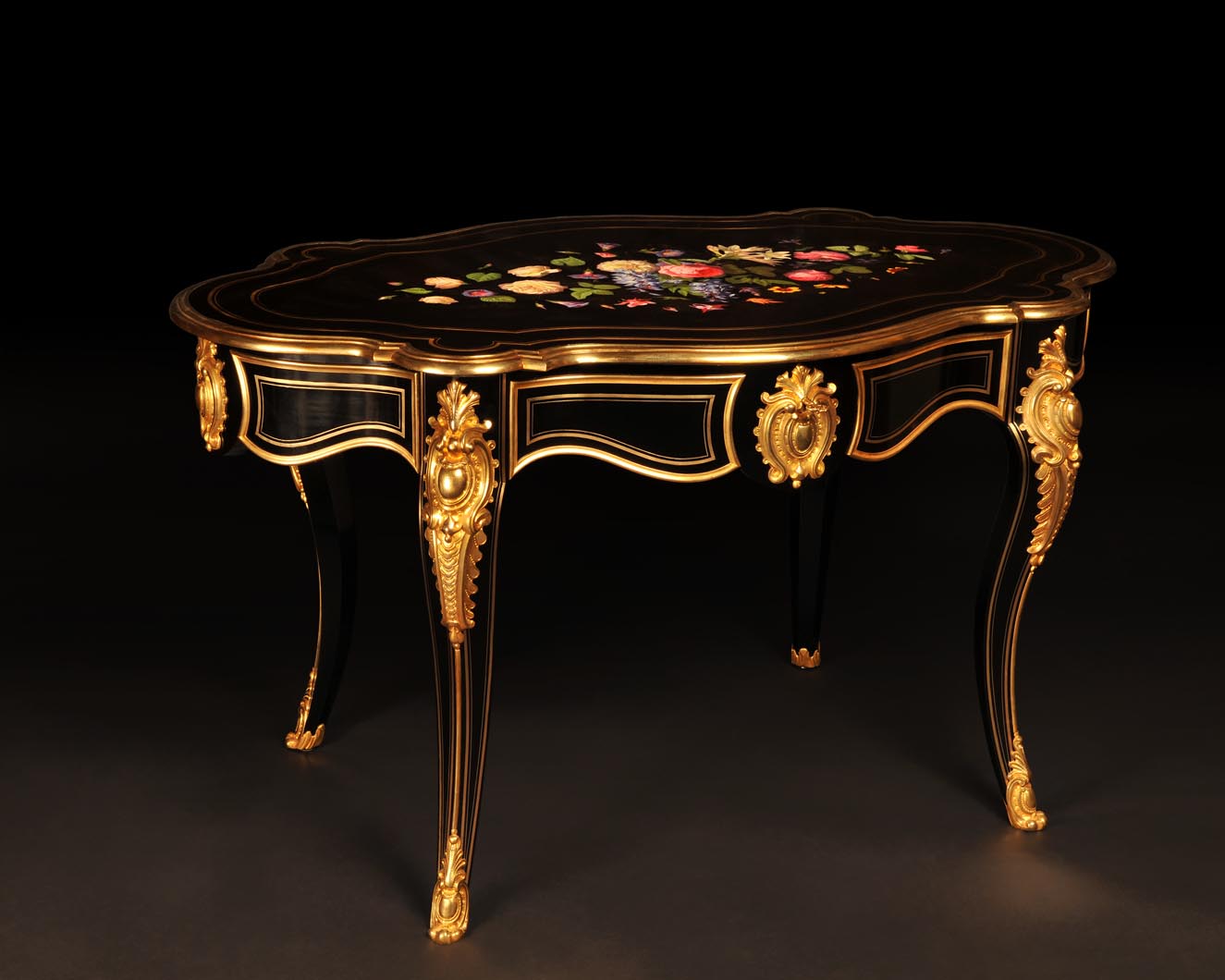
Louis XV style table in ebonized pear wood
Between 1850 and 1867
This superb violin-shaped table in the Louis XV style was decorated with porcelain marquetry by Julien-Nicolas Rivart. The depth of the black color of the wood highlights the precious quality of the colors used for the central motif, also enlightened by the gild brass elements adorning the table’s base and featuring shells in the purest rococo taste.

Perfume box
Between 1850 and 1867
This elegant perfume box, signed by the Maison Tahan , is a rare example of their collaboration with an artist outside the company. Adorned witth gilt bronze and porcelain marquetry, this box is characteristical of Rivart’s production. Rivart’s patent allowed him to retain exclusivity on this type of work and he was obviously closely involved with the box’s fabrication.